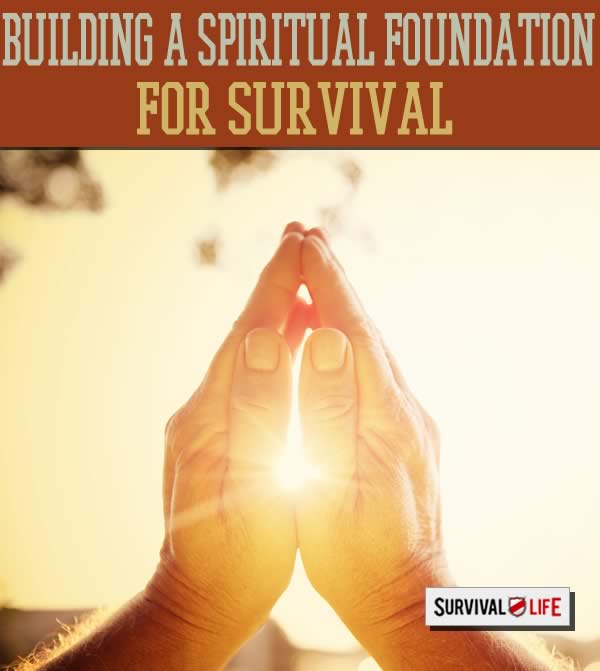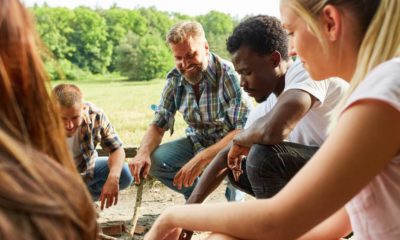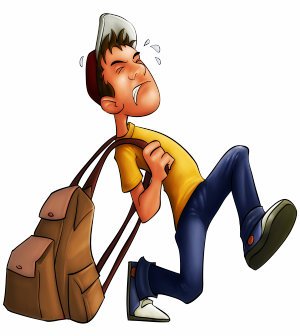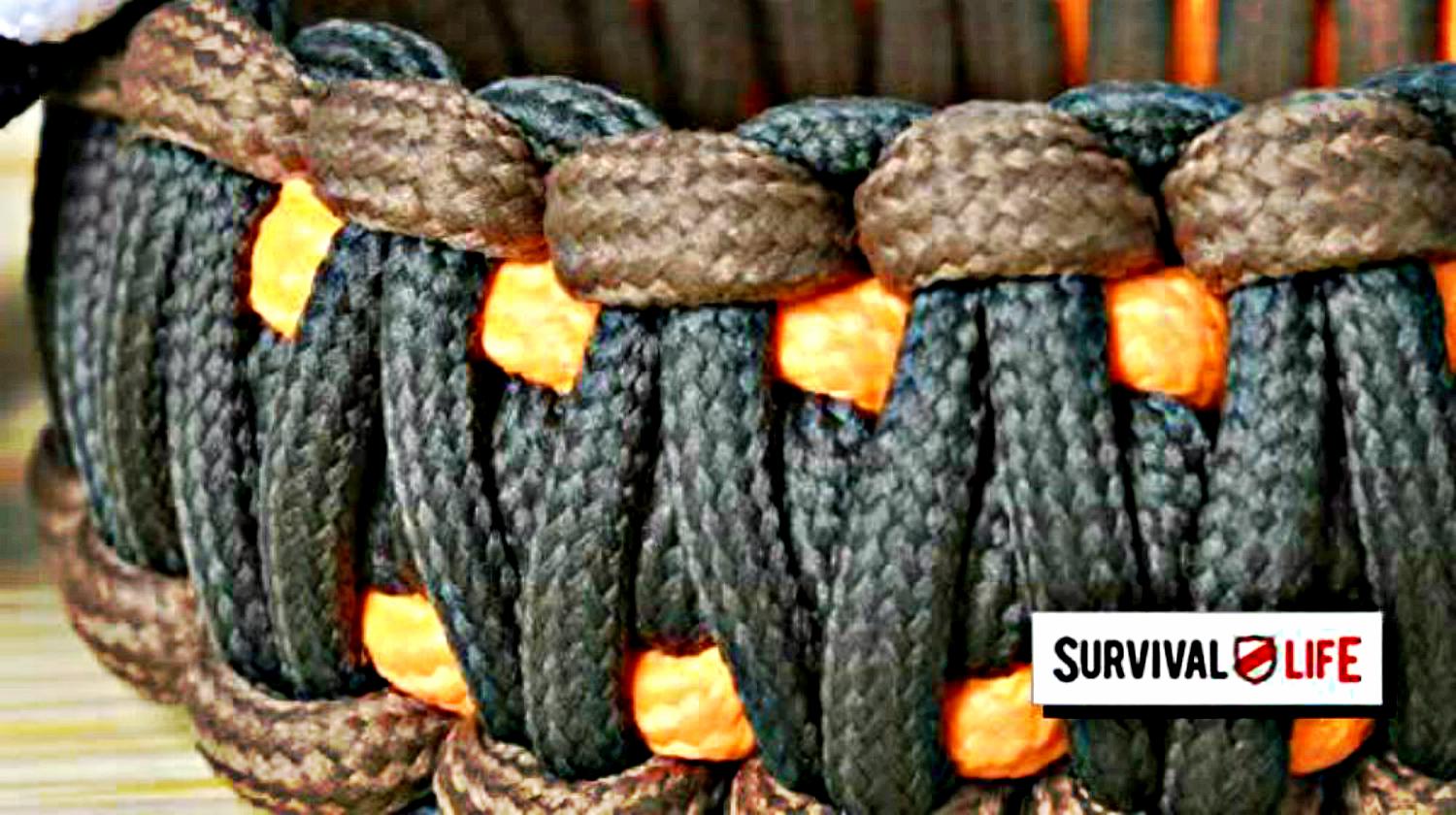Do It Yourself
Landslide Survival Handbook – How To Stay Alive In A Landslide

Landslides are among the most deadly of Nature's terrors. Like earthquakes, tsunamis and volcanoes, slides present an almost unbeatable foe, but, with a serious study of an area, steps can be taken that could prevent a slide, minimize its destruction, or at the very least, lead to faster rescues of survivors.
This guide is intended to help establish a protocol for dealing with slides. Although the task is large, the end result of setting up a protocol and faithfully maintaining it, will undoubtedly save lives and property. This guide includes a cable system, a hydraulic network and a laser pointer; innovations that are essential for quick and safe operations.
The cable system allows overhead transport of items anywhere across the unstable slide area. It will be placed so that any additional material that slides down will miss the system. It uses pulleys and push-pull cables that can handle a grappling tool and cable slings that can pick up trees, heavy structural debris and large boulders. It can be fitted with litter baskets to transport the injured. Placing water pipes along the proper paths allows the Pipe Team to assemble water sources and slurry lines faster. It requires a web of deep-set anchors outside the slide perimeter to securely hold the crossing cables. An electrical winch powered by a generator will provide lift for the heavy loads.
No products found.
The hydraulic network consists of water transported to aid in rapid rescue or recovery by washing debris away from survivors, and flushing the resulting slurry offsite to collection basins. Wherever water is available for this technique, it is far superior over using hand-shovels or mechanized loaders. If the location of victims is known for certain, shovels and front loaders can help, but the chance of injuring or killing a survivor is much higher if those tools are used in a mass of debris more than a couple of feet deep.
In setting up the water network, assuming a source is nearby, the intake must be screened and set at an elevation above whatever point on the debris field is most likely to contain survivors, otherwise, the water would have to be pumped up higher. If pumps are available that can provide a pressure stream beyond the reach of the pipe and hoses from a gravity-flow setup, it would be a significant help. In a large debris field, it may be feasible to call in tankers or water drop helicopters to help wash the site. Sliders on the field would have to be warned to take shelter during the drops. By using short channels that can direct the washed mud and sands away from the work area, that slurry can be directed into a screened funnel arrangement to be piped offsite.
The laser pointer is intended for mounting above the debris field with line-of-sight access to the whole field, and to water intake and slurry discharge sites. It is linked in to GPS coordinates that have been plotted into the database to locate structures that may be obliterated. By using the predicted scatter cone of debris from a known structure, the laser can point out the centerline of that cone to help Sliders locate survivors. The Sliders would wash and probe down that line first and then work parallel lines outward from the centerline, looking for victims. In the case of a very large slide, canyons and outcrops and other normal landmarks may be completely lost to view and the laser pointer would be particularly helpful.
PART ONE – Foundation
Database
The foundation of this whole operation is the database. It tells us What to do and When. It describes the How and Why, and finally it assigns the work to those Sliders Who are willing to lay their lives on the line to help others.To create the database it is best to enlist the help of as many Sliders as possible. Assuming time is of the essence – that the sooner everything is done and we are ready to respond to the first slide, the better, then it makes sense to assemble a large team. And, it will take a large team to perform the tasks ahead of us. Having Sliders familiar with the tools of systems analysis, communication, and data display, this work should flow quickly.
Past History
This identifies likely slide areas. Suggestion – start with this year, and go back year-by-year rather than skipping recent times and going back many years. Get basic information from these sources: Photographs, newspaper articles, interviews with local residents, geological research, seismic events, streambed dislocation, maps that show roads that abruptly reach a dead end but are not associated with property lines, past forest fire damage, changes in ground cover, slumping at the base of hills, but not deltas from streams or deposits from ancient ice flows. Any information that indicates slide activity may be of value.
Present Status
This determines where to set up operations. In addition to present-day information from sources like those listed above, get more from: Satellite studies and drone data, recent topographic maps, GPS identification of positions of all homes and physical installations, culvert capacities, maximum floodwater possible for all bridges in area, maximum width and height clearance of all bridges for cargo transport, general road conditions, dip crossings' capacities for floodwaters, structures-roadways-railways adjacent to edges of streams, tight curves.
Also look for access times for lowboy transport from supply sites, watershed conditions, the amount of snow or rain necessary for full saturation of the soil, vegetation on slide area, quantity of trees with type and size. Obtain maps of utility easements, manmade structures, location and number of persons in residences, specific number and descriptions of persons unable to evacuate quickly – the very young and very old or those with disabilities.
- Hardcover Book
- Kusky, Timothy, Ph.D. (Author)
- English (Publication Language)
Determine locations of domestic animals, fuel tanks, hazardous substance containers, barriers to ingress-egress for emergency vehicles, alternate roads and trails into area, and large truck parking and turn-around sites for off-loading onto smaller vehicles. Closest airports and helicopter pads need to be located. Notice lakes, streams, ponds and other water sources. Using the data, it will be possible to create computerized maps of slide areas and overlays showing placement of the following items:
1. Principal areas for slides, with destruction pathways based on topography and manmade barriers.
2. Best sites for laser pointers linked to the database and GPS points, to direct rescuers to locations of buried survivors, and to direct water teams in placement of upstream intakes, distribution and slurry drain lines. The sites should be stable, above any additional slide movement, and have a full view of the area.
3. Locations of residences and businesses inside the debris path.
4. Paths of hazardous substances caught in debris flow.
5. Best paths for pipe-laying team from the point of upstream intake to highest point of possible survivors, using a grade of 3% approximately. Topographic maps can help estimate the elevations of the slide debris. No stream? Plan on temporary water storage using liners and makeshift walls, with water trucked in. Pipes will be laid from the storage facility to debris field.
6. Staging sites for Security Team to receive authorized personnel and supplies. This requires turn-around space, and could be at the same location designated for large trucks to offload to smaller vehicles if the roads into the slide area are too narrow for easy turn-around. Emergency vehicles must be able to enter and leave without delay, including helicopters. Be aware of all power lines and towers for communication.
7. Staging sites for all teams need to be accessible for re-supply using pickup trucks or ATV's.
Post this notice and be certain all Teams know to comply:
NOTICE TO ALL TEAMS
Before any Teams enter the slide area, every effort must be made to determine what might have triggered the slide.
1. If the ground is saturated and the history indicates it is a potential slide area, then it should be relatively safe to proceed.
2. If there have been sonic booms, nearby industrial or mining dynamiting, or other known explosive activities, there must be NO ENTRY until those responsible are contacted and provide email or fax assurances that their activity will cease until the slide area work is completely finished and Command Center notifies the responsible parties with email or fax notices.
PART TWO – Team Names and Tasks
Backup provides continual support to all Teams. Maintains inventory of all supplies, rotating time-sensitive foods and meds. Updates Alternate Sources list of supplies and equipment.
Cable the cable system consists of a network of cables suspended above the debris field and extending beyond to reach the water source and the log and large debris loading area. Team maintains and operates cable systems for transporting pipeline, equipment, supplies, large debris, rescue and recovery devices as needed. It is in charge of portable cranes and hydraulic lifts if needed for exceptional loads. Maintains and operates Jaws of Life units.
Chainsaw These Teams will reduce limbs and wooden structures to manageable size for the Removal Teams to handle quickly.
Command Center Command Center is made up of a representative of each Team to share decision-making and to respond to needs of Teams. It is the official point of contact for press releases, and for all outside agencies, groups and vendors. Instructed regarding inappropriate communication with the press and media, they will provide information for the public. They will also maintain contact with the families of victims. Teams are instructed to forward any requests for any information to this Center.
Communications Selects and maintains audio-visual communication system, with every Slider able to communicate. The Team also issues Alert Notices to appropriate locations using a color code, and will maintain a highly visible flag for all to see.
4 Alert Stages:
Green = area is clear, proceed
Yellow = work with caution – area may develop threat to Sliders
Red = high alert for new injuries or deaths – “1Watches and 1Works”.
White = evacuate all Teams immediately – no time to get anything except Team members and Survivors.
Counseling Staffed by a mainline denomination Minister, Priest and Rabbi, this Team will provide trauma counseling to the Teams, and offer prayer and counsel to the surviving victims. They will generate appropriate communications given by the victims and pass them to the Command Center and Legal Team for approval for Communication to forward to relatives or close friends.
Dam This Team will be available to prepare a dam in an available stream to provide for intake water to the hydraulic system. In the event of a “Damslide” where the slide material has blocked a stream creating a dam, this Team will monitor water depth and will devise ways to relieve a buildup of water that might break through the dam and flood locations downstream. It also constructs a series of settling ponds to receive the slurry of mud from the debris field.
Debris Removal Responsible for removal of debris from essential areas of slide. Determines which slide debris is not required to be removed because it does not hinder operations, or does not pose a threat to property, people or public operations. Will utilize various teams to make debris accessible and removable. Example would be large tree – requires Hose Team to free up tree, Chainsaw Team to de-limb and cut trunk into sections acceptable for the Cable Team to haul out, and provide heavy log removal.
Debris Placement Receives debris and distributes into appropriate locations. Example – a large tree might break down into three sizable logs 8′ to 10′ long. This load would be placed on trucks to haul to a predetermined site. Most of the smaller debris, limbs, brush, and shattered structures would be loaded onto dump trucks for removal to predetermined sites. Mud slurry would be directed into the settling ponds mentioned above. Salvageable materials would be routed to a particular location.
Document The official news arm of the operation. Creates video and audio- tapes, including all aerial surveillance data. Maintains permanent archives and analyzes event for statistical data and for analysis of issues that developed, to help with resolution of problems. The materials would not be released except through the Command Center.
Equipment Shovels, gasoline-powered chainsaws and spare parts and oil, pry-bars, axes, handsaws, wire-cutters, come-alongs, hacksaws, typical hand-tools, portable generators, powered water pumps, powered hydraulic jacks, electrical cables, steel cables and fittings, wire screens for water and slurry inlets, drills, winches, wedges, sledgehammers, cable slings, pulleys, and more.
Food This team will determine amount of food needed based on the estimated time to work the slide, and number of Sliders. It will prepare and serve hot food and drinks on a continual basis, allowing for teams to rotate their shifts. Snacks for breaks will be available. It will be responsible for maintaining a bear-proof receptacle for garbage and for stowing all foods in bear-proof storage containers. The Team will make sure to comply with Health Department regulations. It will also set up water fountains at appropriate locations throughout the area.
Hose This Team is in charge of placing quick-connect hoses with nozzles onto the pipe adapters attached to the incoming water pipes. They will use the hoses to reach out to areas designated by the laser pointer or onto partially collapsed structures to wash away debris. The hoses will be lightweight, collapsible material and the nozzles will be lightweight as well. Their main work area will be the debris field, and if needed, to assist with washing slurry away. If hazardous materials contaminate personnel, they may provide a quick rinse before sending the person to the deluge shower. They will place labels on hoses and connectors indicating potable or non-potable.
Legal This Team is responsible for reviewing and guiding the entire operation. It may require liability insurance and will review laws that apply to ingress, egress, barrier removal, unauthorized entry, harassment and other issues.
Medical The Medical Team will be in charge of establishing necessary facilities for on-site emergency treatment of all injuries, with treatment of minor issues including snakebite, animal attack, insect bites and stings and reactions to botanicals. It will stock sun-block, salt tablets, diabetic, heart and respiratory medications. It will make decisions to transport, and referrals. It will supervise retrieval of injured persons from the field, including those who have been stabilized and are transported by the cable system. It will monitor supplies using sources that are reputable, ensure security of medications, and maintain records in compliance with normal guidelines. It will arrange for a temporary, secure morgue at the slide site, the capacity to be appropriate for an estimated number of fatalities, and will monitor temperatures, alerting the Equipment Team in the event of equipment malfunction. The Team will do a briefing for a general meeting of the Sliders regarding First Aid and concerns in the field. Working with the Communications Team, they will document all treatments that may have repercussions.
Pipe The Team will place lightweight plastic pipe for transport of water from a source, such as a stream, or a siphon from a pond or from pumps accessing a source. The primary destination will be to the debris field and may involve multiple pipelines and multiple outlets as needed. They will work with the Hose Team to get water where most needed. They will make certain all pipe sections are labeled and not interchanged. They will use laser pointer guidance to maintain a good gravity flow. If hooked up to pumps, they will block-support any ells to help keep pressure from separating the joints. If there is a need to use high-pressure pumps, they will switch from thin-wall PVC pipe to Schedule 40 with solvent joints. At completion of use, they will cut the Schedule 40 close to the cemented joints to recover the useful pipe sections. Cemented connectors, tees and ells will be discarded.
Pump Pump operation and maintenance will be essential and this Team will have that responsibility. It will provide pumping for both potable and non-potable water and will provide labels to all Teams for placing on pipelines and containers. Pipelines will not be interchanged. In the case of temporary ponds, they will place stable, floating signs identifying the water. They will have replacement parts on hand, sufficient fuel in a secure enclosure, and will operate a shop for repairs and maintenance. The pumps will be clearly labeled so that they will not be interchanged with the two types of water.
Restroom Portable facilities will be installed and maintained, stocked and cleaned as needed by this Team. Placement of the portables will be in convenient locations. If it appears the work will last longer than the design of the portables allows without pumping, the Team will schedule pumping with the supplier and will verify that adequate facilities were available throughout the entire effort.
Security Staffed by persons with military, medical or police backgrounds, this Team will provide overall security. The Team will be the first to enter the slide area. They will establish 24/7 manned checkpoints at all roads and trails that enter the slide area and will be the first to travel the principal roads into the area. They will check all vehicles leaving the area for information regarding possible victims, their names and addresses.
If there is credible information of a possible terrorist encounter, including the possibility of ambush by snipers and suicide bombers, they will scan for likely locations of snipers or explosives.
They will place barrier cones and signs warning of “Road Closure Ahead” and “Security Checkpoint Ahead” at the final intersection of roads closest to the slide area to facilitate a detour. If no intersection fits this description, then they will place the signs at a place where it is convenient to turn around.
The Team will contact Command Center immediately for all security issues. It has the authority to declare an Evacuation – White Flag, if there is a bomb possibility or an active shooter, but they must first determine the safest direction for evacuating and announce it through Command Center and Communications.
Although immediate search for survivors is uppermost in the minds of everyone involved, additional slides and terrorist threats are serious and the safety of the Teams comes first. The horrible loss of those First Responders at the 9-11 attack will always remain a graphic lesson in counter terrorism. There cannot be losses among our Teams.
The Team will have armed guards available for defense from wild animals.
No products found.
Shelter Adequate shelters must be erected, and firmly secured from strong winds. These can be mobile homes or similar portable shelters. Cold weather shelters will need to be insulated and heated with certified vented heaters. Hot weather calls for air conditioning, refrigerated or evaporative depending on the typical humidity. There should be enough shelter to house all Teams simultaneously. Separate quarters for male and female personnel are required. Shaded areas are to be set up where maintenance and repairs are made, sun-sensitive supplies are stored, and in various rest areas.
The Medical Team will need heated and cooled facilities, with several bed spaces for injured person to rest until transported into nearby facilities. Their facility must be secure from theft of supplies. Temporary shelters may need to be placed on the slide debris if survivors are being rescued. Blankets, pillows and waterproof covers will need to be furnished. Teams may need full-length rain gear.
Traffic The Traffic Team works with Security to establish traffic patterns and direct traffic. They keep roads clear for support vehicles and assist Security at checkpoints.
Water Providing a continual source of potable water for cooking, drinking, and deluge decontamination showers, the Team will also maintain a supply of accessories – cups, ice, soap, shampoo, conditioner, and towels. It will have test kits to evaluate water quality, and will have already tested mobile tanks for contamination. On-site water sources must be filtered and treated before use as potable water. The Team will keep a large supply of water on hand at all times, using portable tanks intended for potable water.
PART THREE – Plan of Attack
1. The first item is for Command Center to get online and determine cause of the slide. If it is something that can continue to generate tremors, it must be stopped before entry into the site. Simultaneously, the Document Team will start work.
2. Once it is safe, the Security Team and Traffic Team will clear the way into the site for the rest of the Teams. They will document all personnel entering and leaving from this time to completion of the project.
3. Entry into the area calls for each Team to unload their gear at pre-determined sites, with large, 2-sided signs at each one. These sites will be located so that there is no blockage of roadway. Several Teams can begin setting up. These include Backup, Cable, Chainsaw, Dam, Debris Placement and Food Teams. Along with them, the Hose, Pump and Restroom Teams can set up, followed by Shelter, Counseling and Water Teams.
4. If there are visible casualties, the Medical Team immediately begins attending to them. If there are no visible victims, they will continue setting up their facility.
5. The next two Teams need to be the Laser Team and Communications. The Laser Team will establish their position by satellite, link up with the Communications Team to access data for the slide pathway and debris cones to identify likely places to search for survivors.
5. The Debris Removal Teams will begin searching using laser beams to spot the centerline of the debris flow to show where victims are most likely to be buried.
From this point forward, each Team will carry out their tasks. If one Team is fully set up and has no work to attend to, it should assist other Teams. The Command Center will receive requests for assistance and can forward these to to the Teams that become available.
The top priority is to rescue victims in a safe manner, provide treatment as necessary to stabilize them and transport into fully equipped facilities. The second priority is to recover the deceased, have Medical Team ascertain death and establish probable cause based on photographic evidence taken as recovery progressed. Medical Team will then place the deceased in the temporary morgue
PART FOUR – Miscellaneous
No products found.
Slide Types
These describe unique issues that may require different approaches.
Landslide – Earth material that has moved causing destruction.
Damslide – Slide blocks a waterway, creating a possible secondary hazard of flooding downstream if there is a catastrophic release of newly dammed water.
Dryslide – Water must be flown in or brought by tank trucks because no sources are within reasonable distance for supply. Hydraulic washing of slide material is much faster and safer for rescue of victims than hand shovels and mechanical removal, so every effort needs to be made to provide abundant water. Once rescue and recovery efforts are made, shovels and mechanical removal is appropriate.
Multi-threat slide – Slide presents several issues, including biohazards, chemical, radioactive, toxic, flammable, explosive, aquatic threat, disruption of infrastructure or other essential facilities.Review of all these special slide conditions might be needed for the really complex locations.
Rockslide – Rock-laden material. If small gravels, they can be handled without special tools, but boulders require heavy equipment or winches with cable slings to remove. Transporting to a designated area is a major concern as well.
Mudslide – Saturated soil material. Very heavy and difficult to move when saturated except by washing with water. Once a mudslide stops moving, water will drain out and the mud particles consolidate into a dense mass, becoming a solid clay. Even at this stage, water sprays are faster and less laborious for removing. The 49'ers used high-powered water sprays to literally wash away hillsides in order to recover the most gold in the fastest way possible. Likewise, we need to wash away overburden in the fastest and most gentle way possible to save lives.
Sandslide – Sand materials, usually from sand dunes or from sand strata in a hillside. Continual collapse is the big problem. Sands can wash out, but it will be necessary to provide a sloping discharge with additional water or vibration to keep it moving. Any obstructions or slowing down may cause enough settling to clog up a closed pipe. Half-pipes or membranes in a ditch are much less of a clogging issue. Sand is also a major threat to a victim if inhaled or breathed into sinuses, with pneumonia complications a possibility. Sand is also a heavy burden capable of compressing extremities and blocking blood flow. It is also heavy enough to cause crushing of the chest. Rescue in sand requires immediate relief from suffocation and compression. Devising a large, strong tube that can be placed vertically over the victim without touching, may help to reduce infilling while removal of sand from around the victim progresses. It will likely be necessary to force the tube down bit by bit as sands are removed. If the tube is not strong it may become a danger by collapsing, further complicating rescue. Don't look around for a sheet of cardboard. Vehicles or engines operating in the area will create vibrations that will cause collapse.
Timberslide – Trees compose at least half of material. Trees in the mass of a slide become barriers to debris removal. They reinforce the mass and must be taken out if possible. This requires a team. One person will operate a chainsaw, while another person removes the slash. If there is a third or fourth person available, they can help move the limbs and slash completely out of the way. The chainsaw operator will benefit from the others watching for a tree to begin to rotate as limbs are removed. If braces are available from other cuttings, they can be used to brace the tree and limit rotation. Another issue for the workers is relieving a stressed tree trunk or limb. Relieving takes place when a cut is nearly through and the remaining wood snaps. One side or the other of the cut may fly away and take someone with it. Sometimes both sides of a cut jerk away instantly. Removal of cut timber is very difficult due to the weight and bulk.
Brushslide – Brush composes at least half of material. Dry brush is not as difficult to deal with as live plants, because the live fibers have greater tensile strength and are not easily snapped. Roots of live brush further strengthen the debris mass. Water sprays will be more effective on the dry materials. Matted live brush might require mechanical removal. A loader with teeth at the leading edge of the bucket will be able to lift out masses. Close inspection may be needed to spot items entangled in the mass.
Domesticslide – Wood structures, metal debris, vehicles, man-made items typically from a subdivision produce a complicated mass of debris. If there are likely victims, it will be a piece-by-piece effort to avoid further injury to the victim. Have saws, pipe wrenches, cable cutters and other tools available. Be very cautious about electrical wiring and gas lines. If there is an odor of gas, leave the area quickly and get the gas turned off. If there are any hot wires that are sparking, get the power shut off before working. Even wires that are not causing any sparks may be live. Shut off the electricity first. A victim that is alive needs those things shut off as much as you do, so don't cause an explosion or electrocute everyone.
Industrialslide – Debris consists of major industrial structures, including tanks, steel-beam supports, piping, sheet metal, electrical items, cable, concrete slabs, cinder blocks, bricks, wooden debris, with toxic, flammable or explosive materials associated with the industry. This slide requires Hazmat Teams, Bomb Squads, Contractors and Engineers of various kinds, and fast transportation for you while they do the dangerous work and you supervise from a block away.
Electrifiedslide – Area is a shock hazard due to live wire involvement. Do not attempt any rescue without being certain the power gets shut off. Wait for the power technician to tell you it is off. If you still hear sparking sounds, see if he will hold your hand while you do the rescue. He won't, so don't waste your time. It is a death trap and cannot be dealt with until the power is completely shut off.
Stratifiedslide – Resulting from slip due to lubricating stratum such as a seam of bentonite clay that expands when wet and contracts when dry. These sites can sometimes be spotted due to prior slide activity exposing bare material. You might see patches of skimpy grasses or fairly new weeds, that indicate recent movement that stripped away original growth. In wet seasons, whole hillsides may bulge outward enough to show cracking of the surface. In dry seasons, those cracks will disappear as the hillside shrinks and recedes. The danger for rescue is the possibility of multiple layers of solid material alternating with clays, creating additional slides later. Extreme caution is needed for work to start.
Composite Slide – List the primary materials in a mixed slide, as in “Composite timber-brush-mud-rock” or “Composite domestic-electrified”. There must be thirty ways to let your hill slide!
Seismicslide – Cause of slide is due to shockwaves from sonic boom, earthquake, nearby explosion, or similar event. Stop any such activity before stating rescues. The area is too unstable when these shockwaves take place.
Suggested List of Resources
The list is long because it takes a massive amount of data to predict a slide, to figure out the direction it will go, estimate the lives and structures impacted and determine how best to handle the results. Suggestion – start with geologists to isolate the most likely areas of concern.
Check out:
Geologists, meteorologists, surveyors, land use planners, forest managers, hydrologists, historians, physicists, civil engineers, information technologists, software specialists, emergency responders, systems analysts, medical facilities, police and fire departments, air support, helicopters and crews, volunteer organizations, earthmoving contractors, tree-trimming contractors, waste removal contractors, re-forestation teams, large-scale mobile kitchens. portable toilet sources, potable water suppliers, construction materials, industrial suppliers, mobile triage, portable hospital, search and rescue teams, rescue dogs, cadaver dogs, portable morgues, fixed long term refrigerated storage facilities, portable industrial generators and lighting systems, road construction contractors, portable housing, vehicle maintenance and fueling, large pumps with extra parts, lightweight pipes and fittings, communication systems, ground-penetration radar, sensitive sound equipment, ground creep sensors, cables, pulleys, all-terrain vehicles, winches, and much more.
With the knowledge and tips provided, you should up your chances of surviving and recovering from a landslide considerably. If you have any extra suggestions, tell us in the comments below!
Copyright 2014 R. Donohue – CounterTerrorism Consulting
Want more about disaster preparedness? Check out these posts:
Disaster Hot Spots That Will Get You Killed
Disaster Preparedness | Camping In The Rain
Natural Disasters Risk List | Worst Natural Disasters Locations
Like this post?
Be sure to like us on Facebook so you can be the first to know about latest survival tips and off the grid living skills.
Last update on 2024-11-21 / Affiliate links / Images from Amazon Product Advertising API
-

 Paracord Projects1 year ago
Paracord Projects1 year agoParacord Projects | 36 Cool Paracord Ideas For Your Paracord Survival Projects
-

 Paracord Projects1 year ago
Paracord Projects1 year agoHow To Make Paracord Survival Bracelets | DIY Survival Prepping
-

 Medical Care1 year ago
Medical Care1 year ago21 Home Remedies For Toothache Pain Relief
-

 Knife Laws1 year ago
Knife Laws1 year agoAre Switchblades Legal? Knife Laws By State
-

 Do It Yourself1 year ago
Do It Yourself1 year agoSurvival DIY: How To Melt Aluminum Cans For Casting















Pingback: The 9 DIY Survival Shelters You Need To Know To Survive Anything
Pingback: How To Build DIY Survival Shelters To Survive Through The Night - Survive!